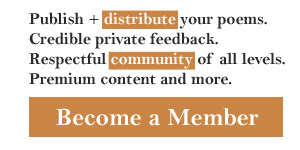This is an analysis of the poem Ek Wou My Ganse Digkuns Waag that begins with:
Ek wou my ganse digkuns waag
om al my hartpyn uit te klaag;...
Elements of the verse: questions and answers
The information we provided is prepared by means of a special computer program. Use the criteria sheet to understand greatest poems or improve your poetry analysis essay.
- Rhyme scheme: XXabX cXcX abXX
- Stanza lengths (in strings): 5,4,4,
- Closest metre: trochaic tetrameter
- Сlosest rhyme: no rhyme
- Сlosest stanza type: sonnet
- Guessed form: unknown form
- Metre: 1111101 11110111 10111111 11010110 110111 11011110 11110111 111101010 111100 11111111111 111111110 11111100 1111111011
- Amount of stanzas: 3
- Average number of symbols per stanza: 134
- Average number of words per stanza: 31
- Amount of lines: 13
- Average number of symbols per line: 30 (strings are less long than medium ones)
- Average number of words per line: 7
Mood of the speaker:
The punctuation marks are various. Neither mark predominates.
The author used lexical repetitions to emphasize a significant image; te, my, om are repeated.
The poet used anaphora at the beginnings of some neighboring lines. The same words om, nee are repeated.
If you write a school or university poetry essay, you should Include in your explanation of the poem:
- summary of Ek Wou My Ganse Digkuns Waag;
- central theme;
- idea of the verse;
- history of its creation;
- critical appreciation.
Good luck in your poetry interpretation practice!
Pay attention: the program cannot take into account all the numerous nuances of poetic technique while analyzing. We make no warranties of any kind, express or implied, about the completeness, accuracy, reliability and suitability with respect to the information.
More information about poems by Jacob Daniël du Toit
- Analysis of Daar Is Geen Dood
- Analysis of O Die Pyn-Gedagte
- Analysis of Repos Ailleurs (Die Rus Is Elders)

